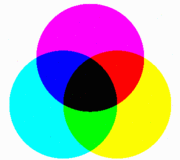 I'm looking for collaborative patterns. It would be good to catalogue useful ways for people to work together, particularly online. But I don't really easily find much in Google. I'm looking for collaborative patterns. It would be good to catalogue useful ways for people to work together, particularly online. But I don't really easily find much in Google.
There's the excellent Citizen's Science Toolbox geared towards face-to-face groups working on public issues. But how about patterns for online collaboration? Even just simple stuff like: these are the qualities and pros and cons of a chat room, a WIKI, a bulletin board, a weblog. But preferably more comprehensive and in more detail.
While I was looking, I ran into Catalyzation of New Patterns of Collaboration which is an old document from 1992, which is a project proposal to a Collaborative Studies Competition.The project aims to facilitate the ability to envisage viable configurations of functions based on structures more complex than those reinforced by hierarchical organization charts. It responds to the need for potential collaborators to design "conceptual keystones" essential to the coherence and viability of unforeseen coalition possibilities in difficult situations of governance.
The project focuses initially on the creation or modification of computer software for which an appropriate database is then developed in collaboration with a number of bodies. These tools are then used to provide a "catalytic context" from which new patterns of group and institutional action could emerge. The principal output would not therefore be any form of "report" but rather a piece of software (possibly a prototype). It is the dissemination of this software, ultimately through commercial channels, which would enable many people to explore the tool as a "collaboration enhancing" device. In this sense the real output of the project is new forms of collaboration.
Its claim to originality would lie in its ability to open up (and mid-wife) new and alternative patterns of collaboration -- especially across discipline, faction and cultural boundaries. In creating this device, the purpose of inter-institutional collaboration would be to enrich its scope (as represented by the database) and explore opportunities it opened up (specifically in relation to institutional arrangements for sustainable development). It aims for some kind of system for cultivating and organizing the awareness of specific patterns, which can be used as conceptual scafolding for specific collaborations.As with the construction of any building, there is a basic need for "scaffolding" to hold the conceptual and organizational elements in place, especially during the early phases of "imaginative, interdisciplinary" interconnection. It may be argued that it is the lack of this scaffolding feature which prevents many potentially useful initiatives from "getting off the ground" -- and staying up. And the more complex the psych-social structure, and the more communication space it spans, the greater the need for more complex scaffolding. That's the kind of stuff I'm interested in. I found this on Anthony's Judge's website. He's been instrumental in gathering large amounts of useful information for ages, but I haven't really looked at what he had for years. An enormous amount of stuff there. See for example Documents relating to Paradigm Change, Social Transformation.
[ Patterns | 2004-02-02 15:11 | | PermaLink ] More >
|
 I'm looking for collaborative patterns. It would be good to catalogue useful ways for people to work together, particularly online. But I don't really easily find much in Google.
I'm looking for collaborative patterns. It would be good to catalogue useful ways for people to work together, particularly online. But I don't really easily find much in Google.
 Via Judith Meskill, from Hymn of the Universe by Pierre Teilhard de Chardin:
Via Judith Meskill, from Hymn of the Universe by Pierre Teilhard de Chardin: